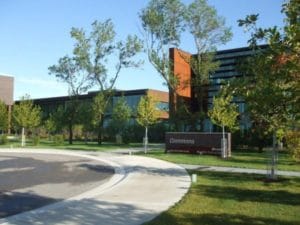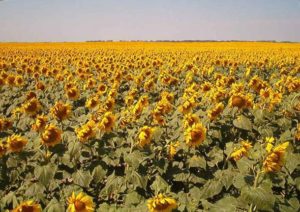For decades, North Dakota’s annual murder rate and violent crime rate was regularly the lowest recorded in the United States. In recent years however, whilst still below the national average, crime has risen sharply. In 2016, the violent crime rate was three times higher than in 2004 with the rise mostly occurring in the late 2000s, coinciding with the oil boom era. This happened at a time when the overall US violent crime rate declined slightly. Workers in the oil boom towns have been blamed for much of the increase in crime.
Economy:
Agriculture is North Dakota’s largest industry, although petroleum, food processing, and technology are also major industries. It is the fastest-growing state in U.S. by GDP. Its growth rate is about 8.3%.
According to Gallup data, North Dakota led the U.S. in job creation in 2013 and has done so since 2009. The state has a Job Creation Index score of 40, nearly 10 points ahead of its nearest competitors. The state has recorded the highest personal income growth among all states for the sixth time since 2007.
North Dakota is the only state with a state-owned bank, the Bank of North Dakota in Bismarck, and a state-owned flour mill, the North Dakota Mill and Elevator in Grand Forks.
Fargo is home to the second-largest campus of Microsoft with 1,700 employees, and Amazon.com employs several hundred in Grand Forks.

As of May 2014, the state’s unemployment rate is the lowest in the nation at 2.6%. The reduction in the unemployment rate and growth in per capita income is attributable to the oil boom in the state. Due to a combination of oil-related development and investing in technology and service industries, North Dakota has had a budget surplus every year since the 2008 market crash.
Agriculture:
North Dakota’s earliest industries were fur trading and agriculture. Although less than 10% of the population is employed in the agricultural sector, it remains a major part of the state’s economy. With industrial-scale farming, it ranks 9th in the nation in the value of crops and 18th in total value of agricultural products sold. Large farms generate the most crops.
The state is the largest producer in the U.S. of many cereal grains, including barley, durum wheat, hard red spring wheat, oats, and combined wheat of all types. It is the second leading producer of buckwheat. As of 2007, corn became the state’s largest crop produced. Most of the cereal grains are grown for livestock feed.
The state is the leading producer of many oilseeds, including 92% of the U.S. canola crop, 94% of flax seed, 53% of sunflower seeds, 18% of safflower seeds, and 62% of mustard seed.

Soybeans are also an increasingly important crop. Soybeans are a major crop in the eastern part of the state, and cultivation is common in the southeast part of the state.
North Dakota is the second leading producer of sugarbeets, which are grown mostly in the Red River Valley. The state is also the largest producer of honey, dry edible peas and beans, lentils, and the third-largest producer of potatoes.
Energy:
The energy industry is a major contributor to the economy. North Dakota has both coal and oil reserves. Shale gas is also produced. Lignite coal reserves in Western North Dakota are used to generate about 90% of the electricity consumed, and electricity is also exported to nearby states. North Dakota has the second largest lignite coal production in the U.S. However, lignite coal is the lowest grade coal.
